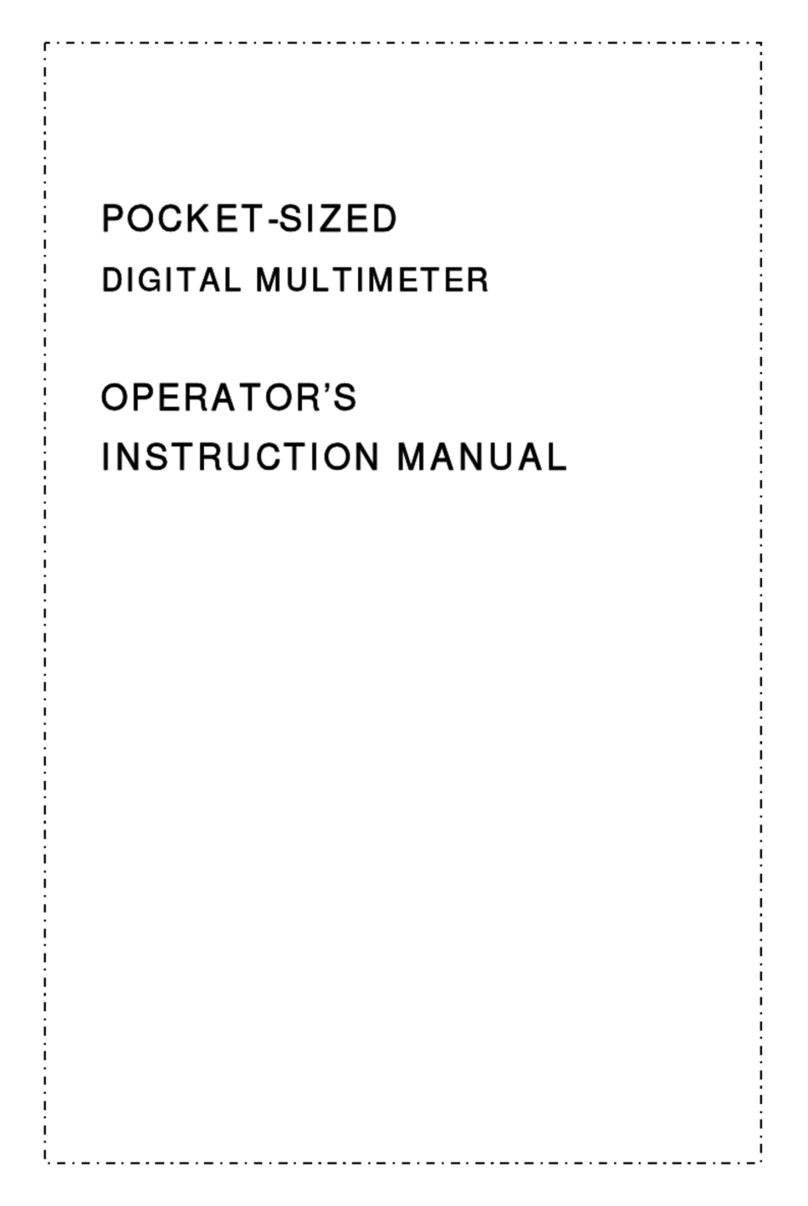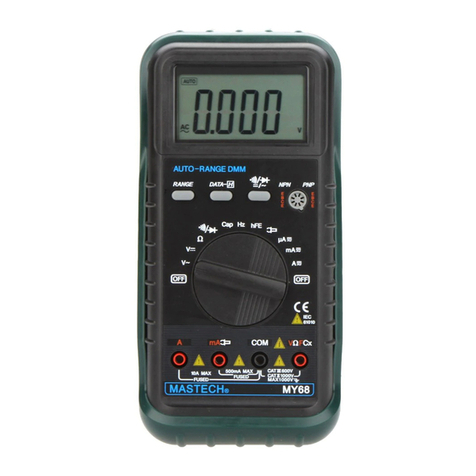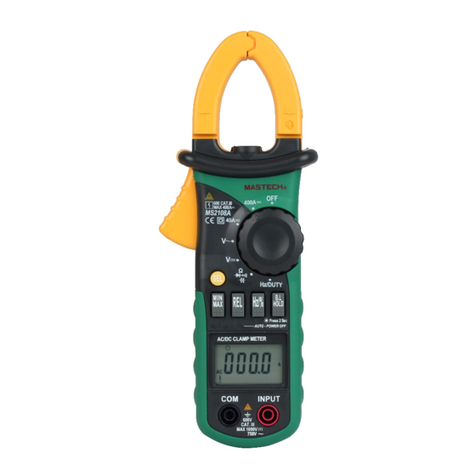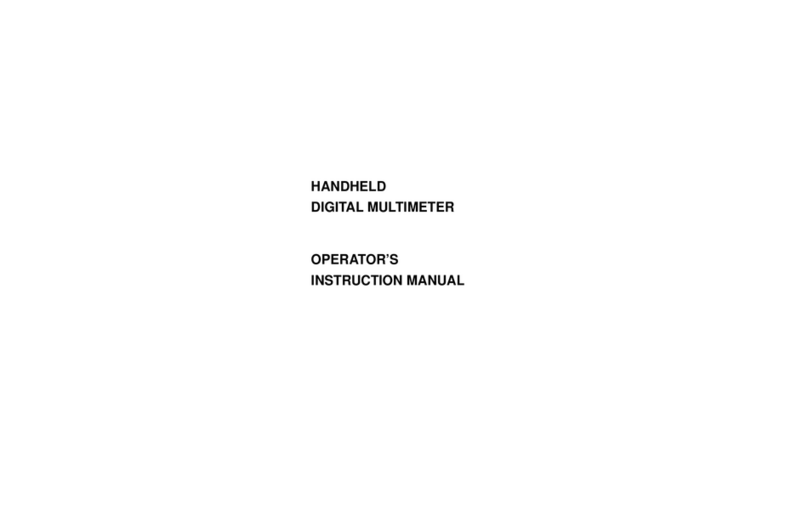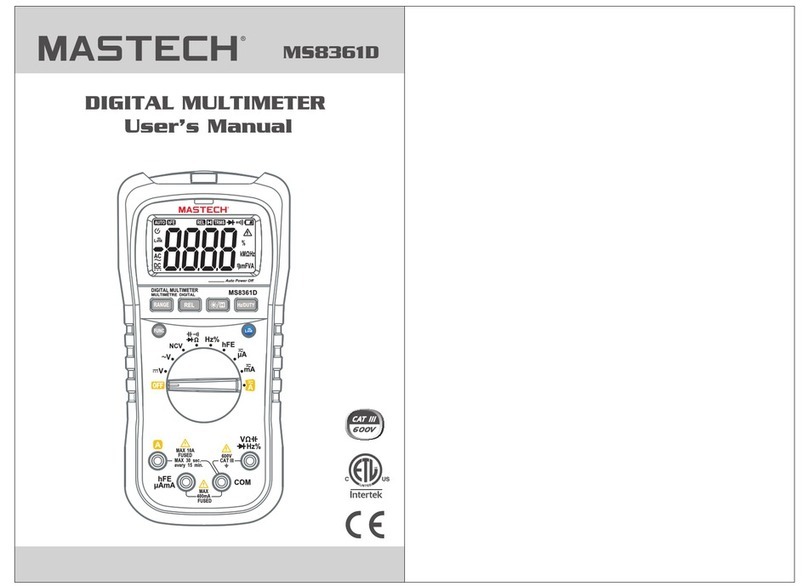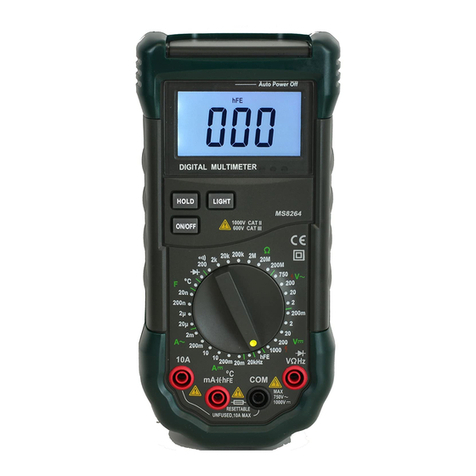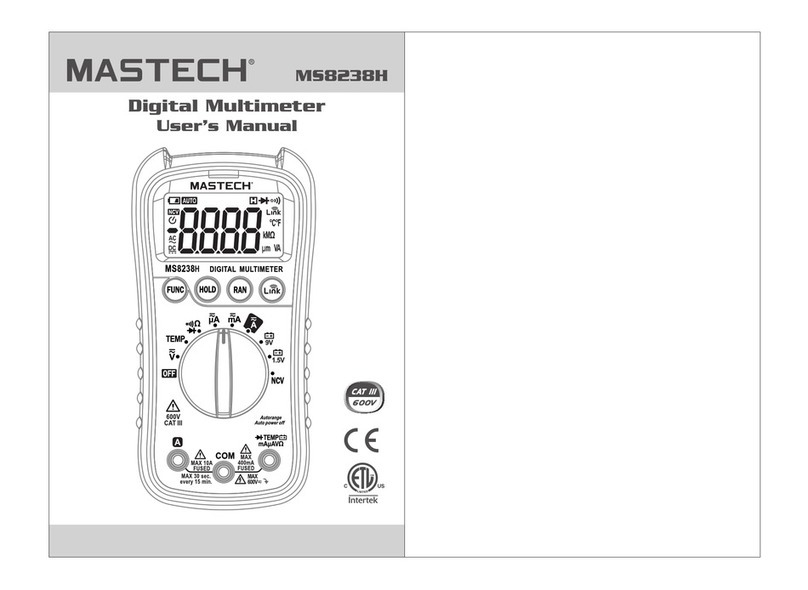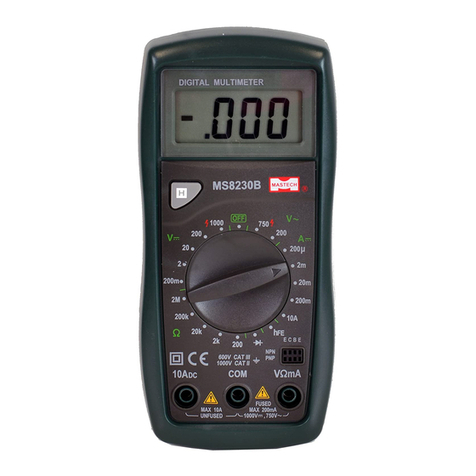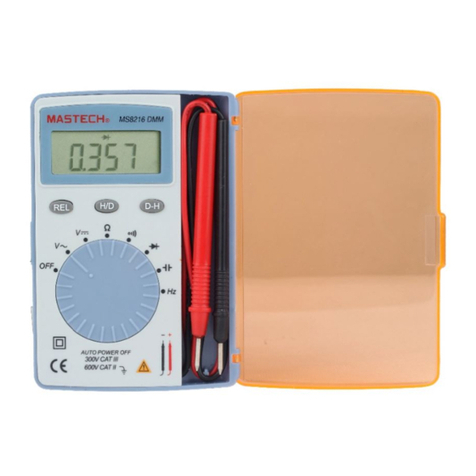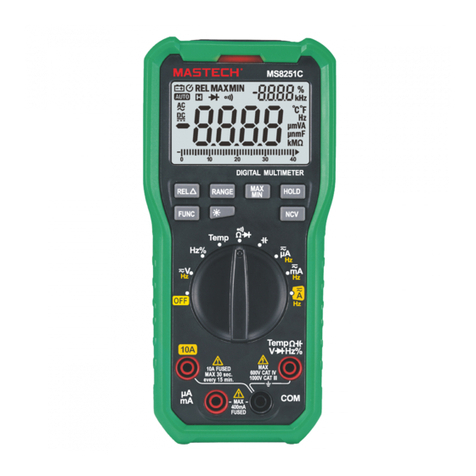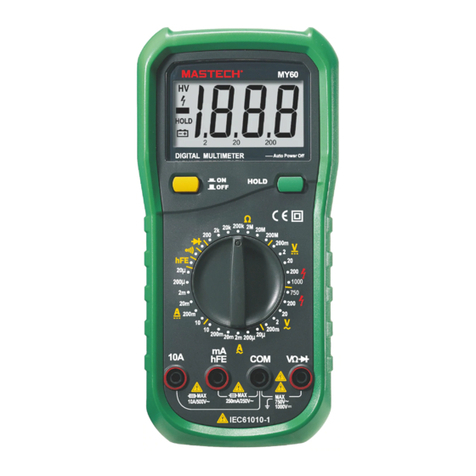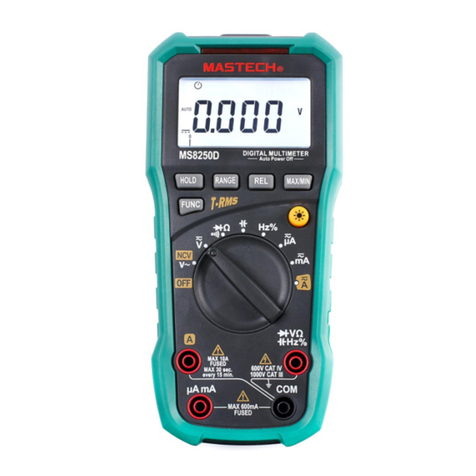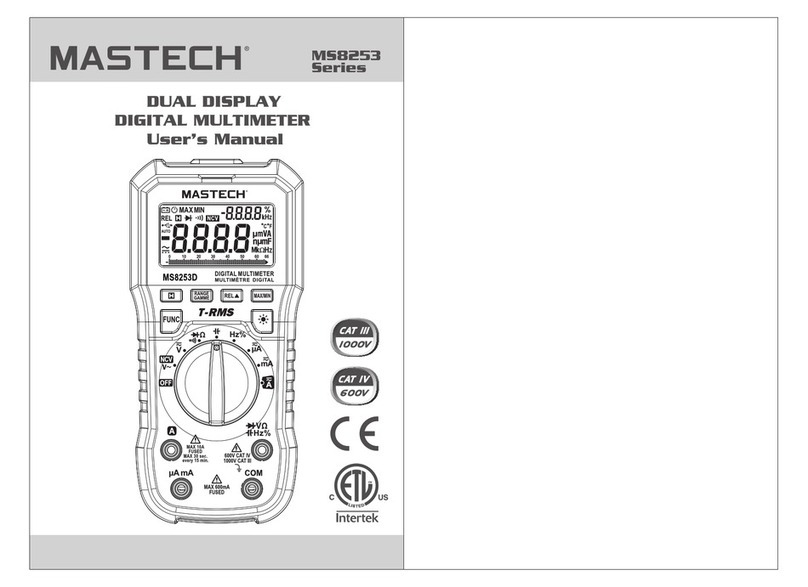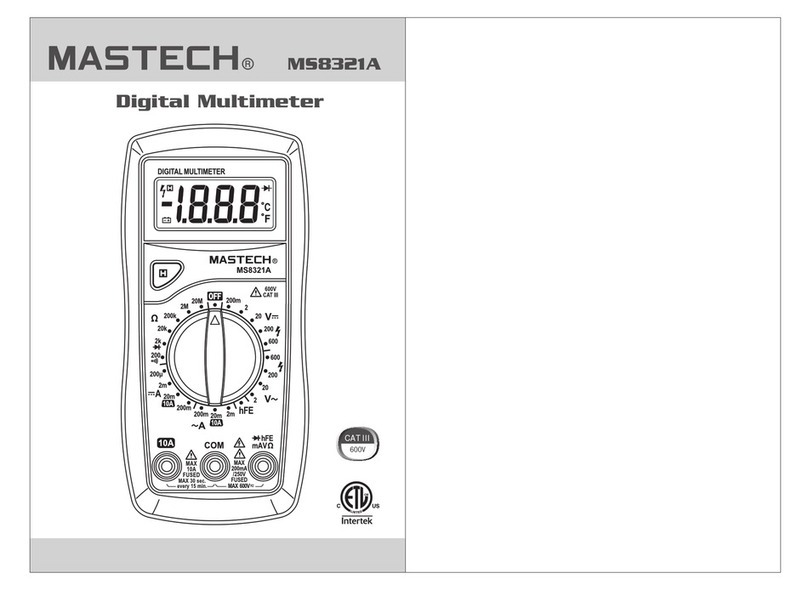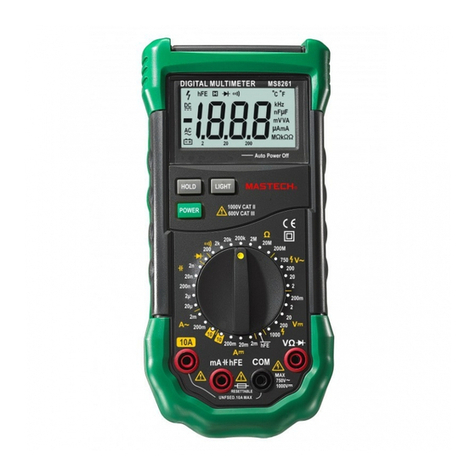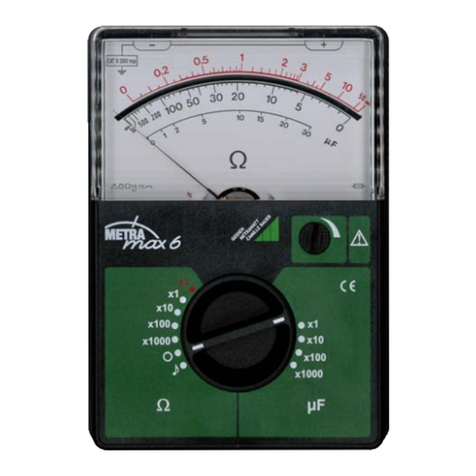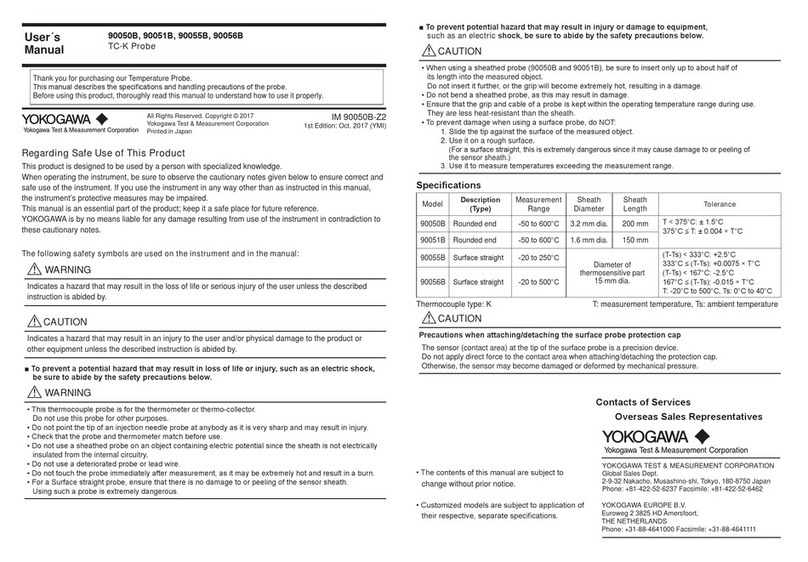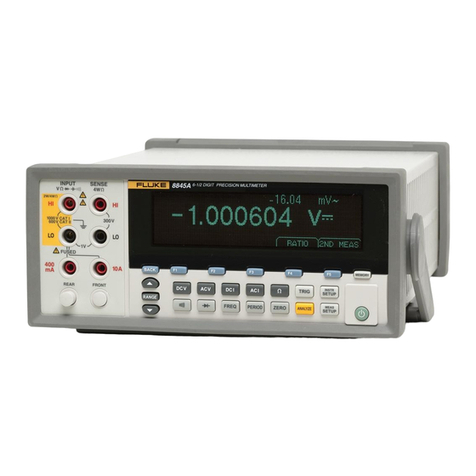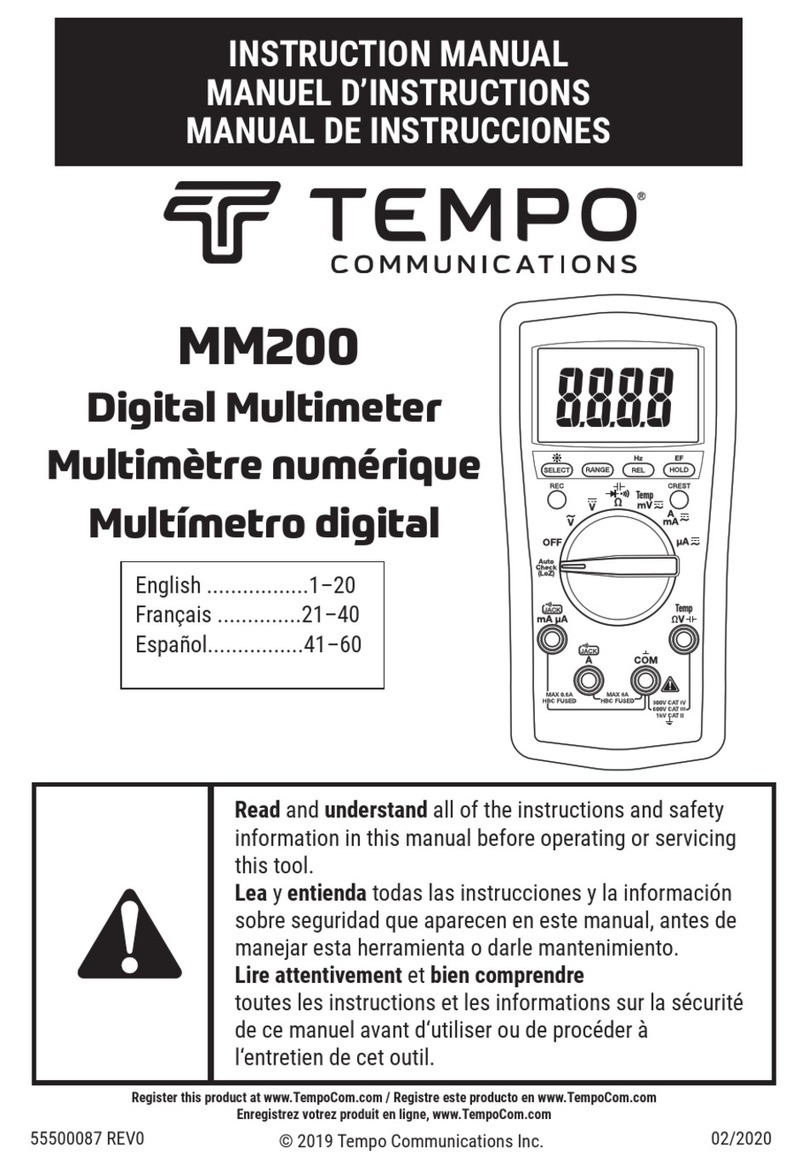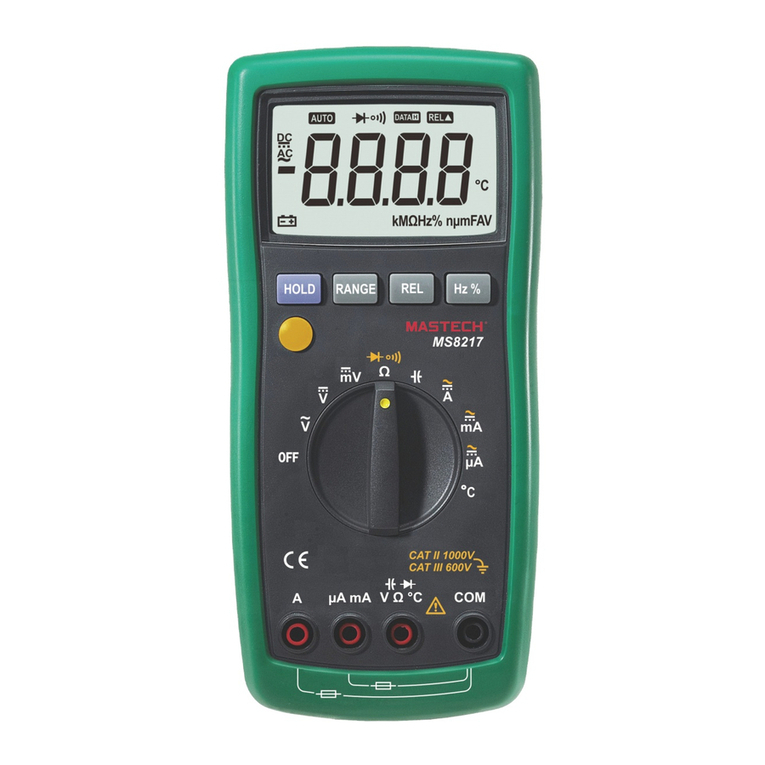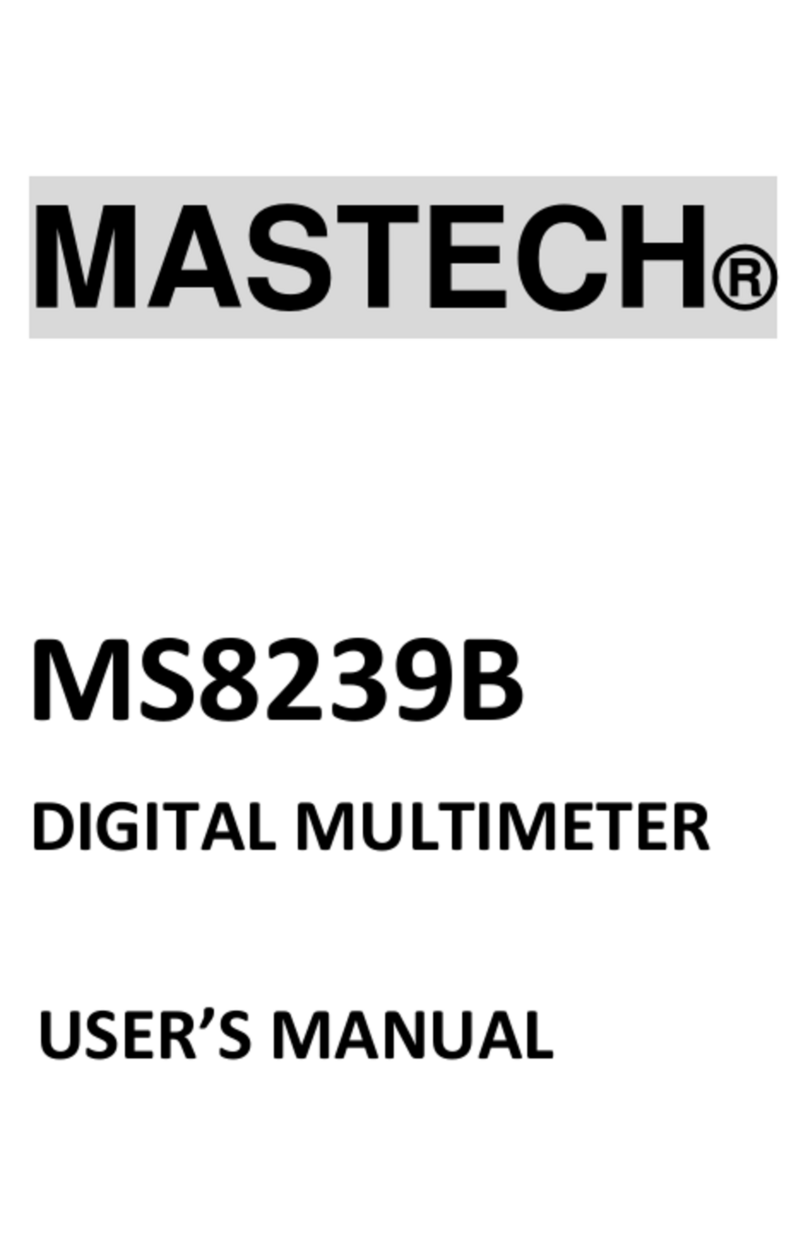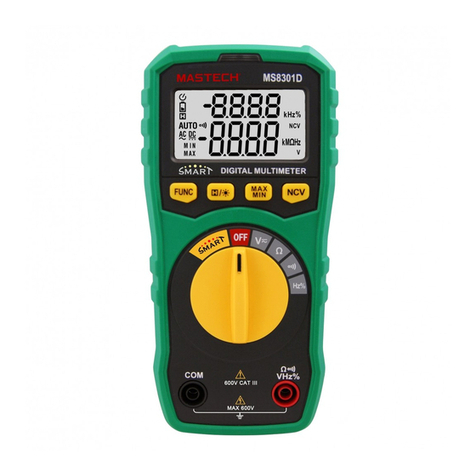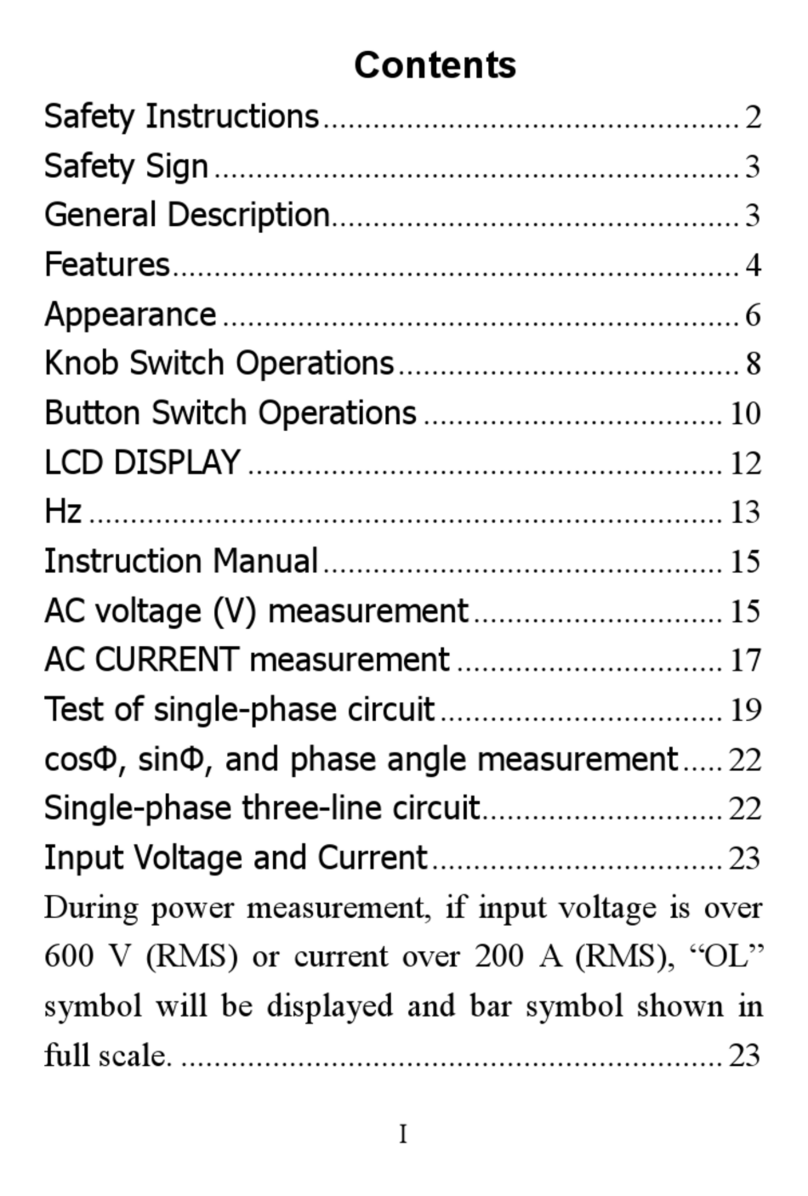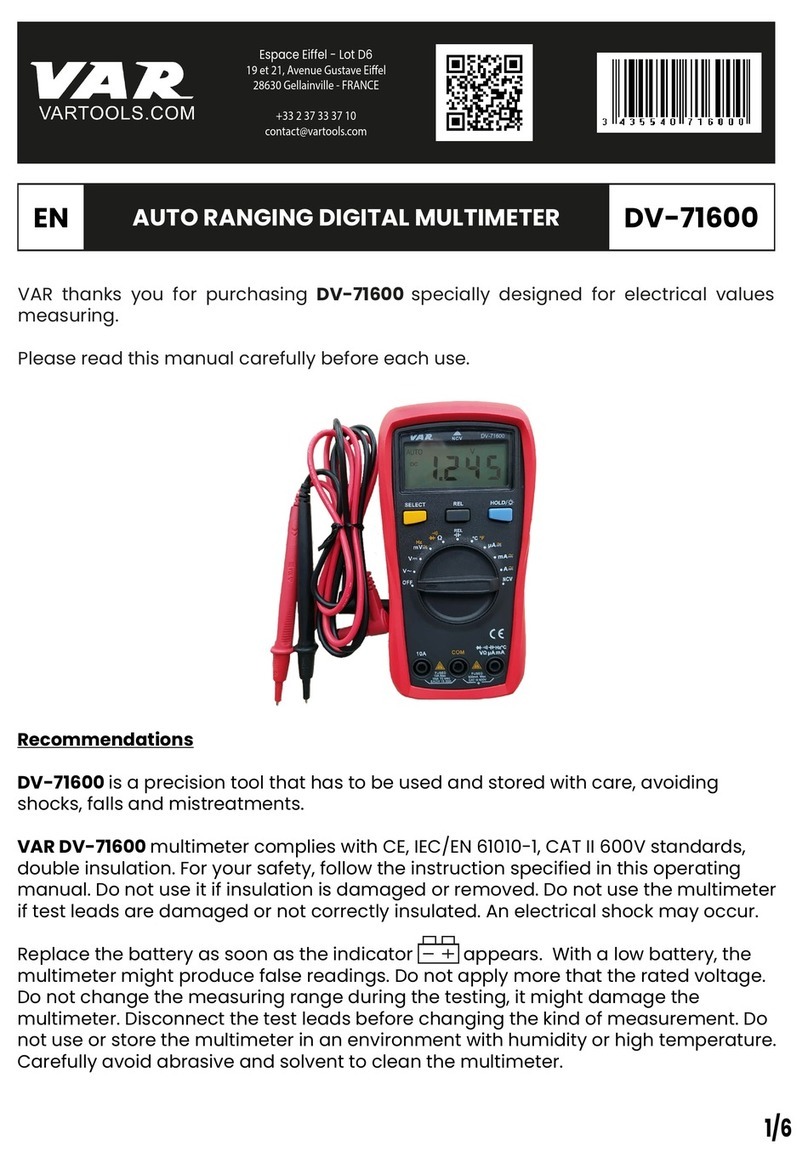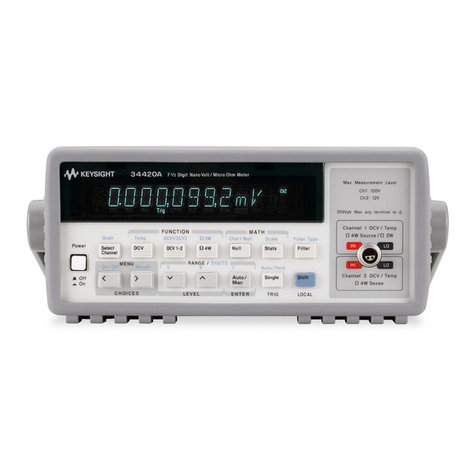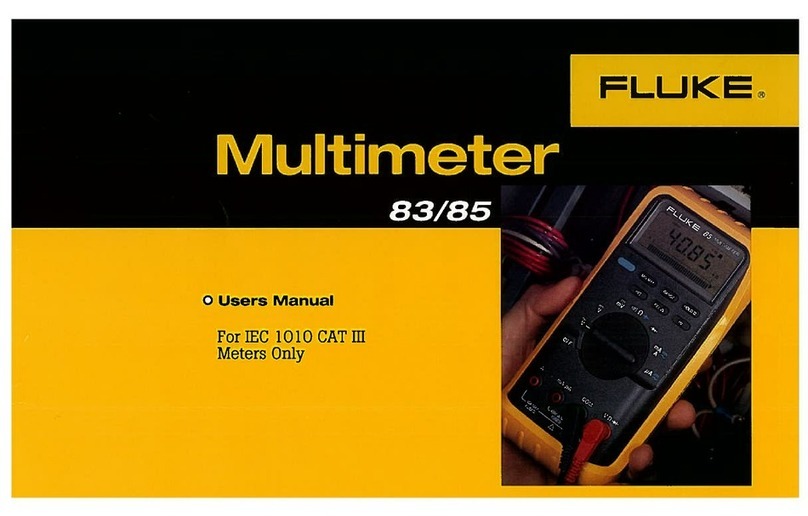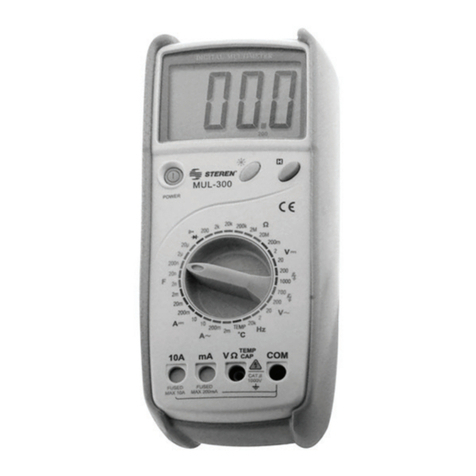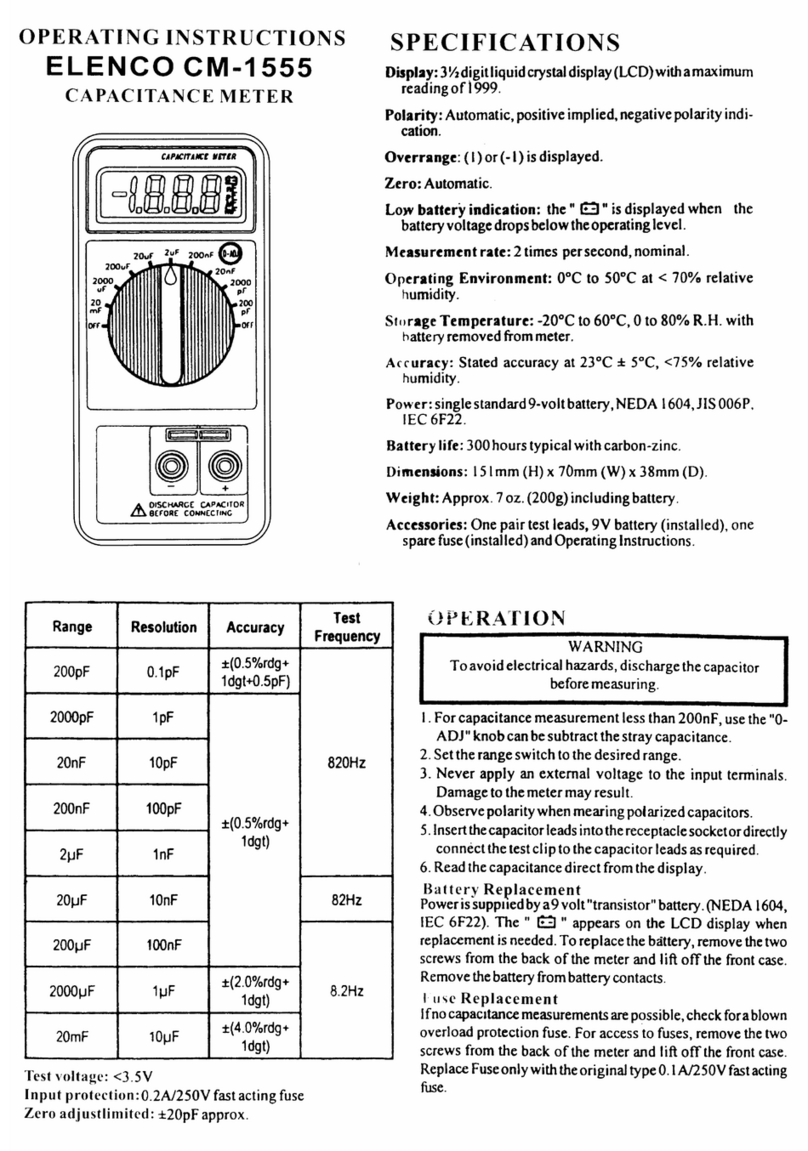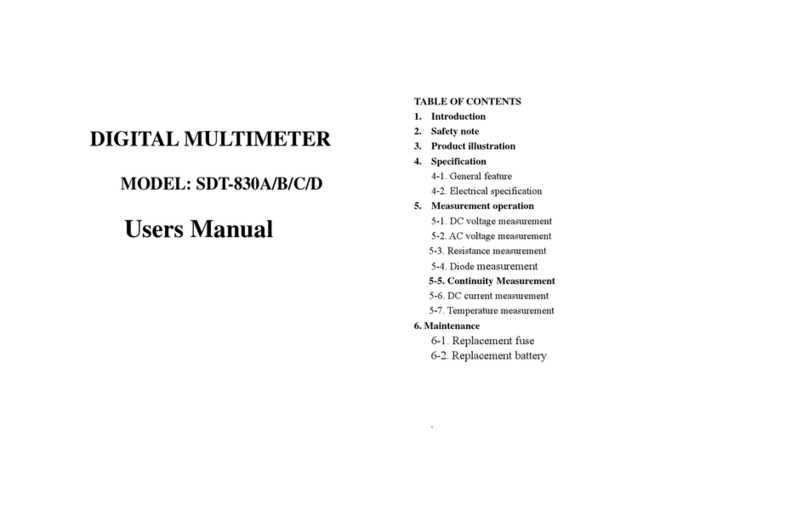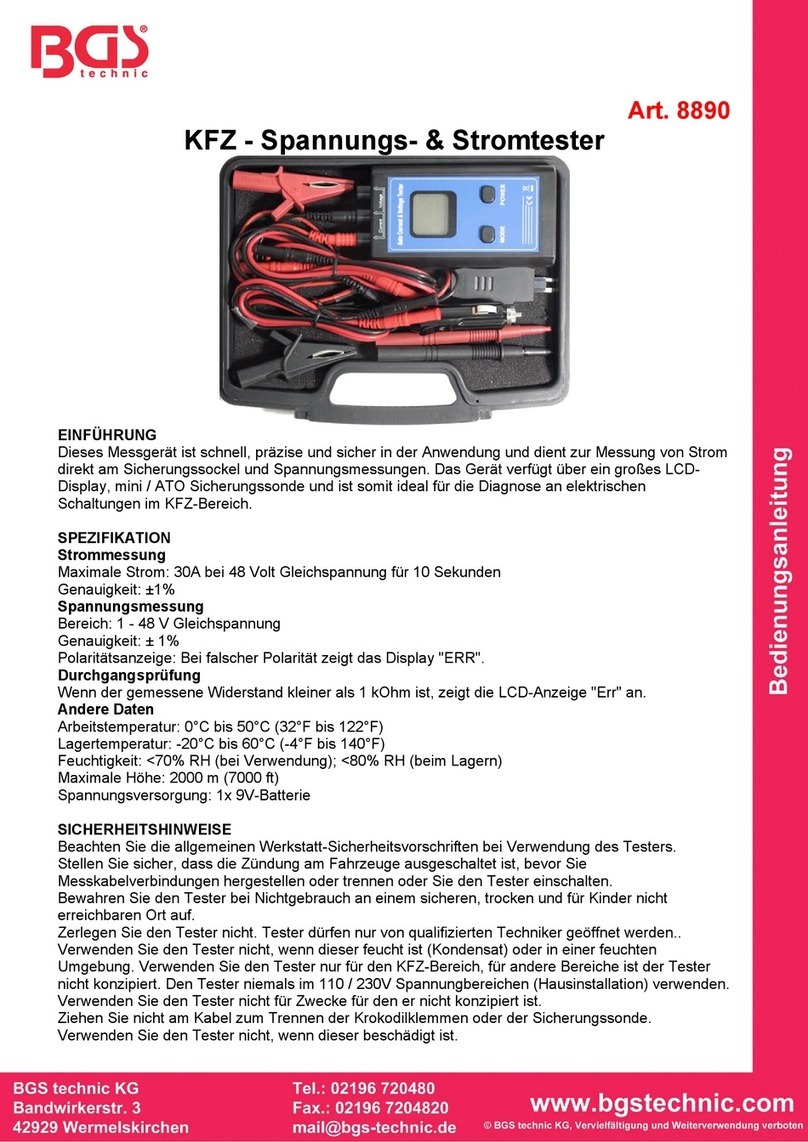16 17
5.7 Frequency Measurement
Warning
Do not measure the frequency of RMS voltage
higher than 250V DC or AC. This prevents electrical
shock and/or meter damage.
Method of measuring frequency:
1. Rotate switch to 20KHZ position.
2. Connect black and red test probe to COM input socket
and HZ input socket, respectively.
3. Measure the frequency value of circuit to be tested
with other two ends of test probes.
4. Read the measured frequency value from LCD display.
Note:
Do not input the voltage over 10V RMS, as accuracy of
readings cannot be guaranteed.
5.8 Current Measurement
Warning
To avoid damage to meter or device, before
measuring current, please check the meter's fuse.
When measuring, use correct input socket, function
selection and measuring range.
When the circuit voltage is over 250V, do not attempt
to measure current on the circuit.
When the test probe is inserted to the current input
socket, don't connect the other end of the test probe
with any circuit in parallel.
DC measuring range of meter:
2.000mA, 20.00mA, 200.0mA and 10.00A;
AC measuring range: 200.00mA and 10A.
Method of measuring current:
1. Turn off the power supply and discharge all high
voltage capacitors on the circuit to be tested.
2. Rotate switch to the appropriate position.
3. Connect the black test probe to the COM input socket.
If the current to be tested is lower than 200mA, connect
the red test probe to the mA input socket. If the
measured current is between the range of 200mA~10A,
the red test probe should be connected to 10A input
socket.
4. Turn off the circuit to be tested. Connect the black test
probe to the low voltage end of disconnected circuit to
be tested and the red test probe is connected to the
other end (high voltage) of disconnected circuit.
5. Connect the power supply to the circuit, then read the
LCD display. If the display shows only “OL”, it means
that the input is out of the selected input range.
Please rotate the switch to a higher measuring range.
6. Turn off the power to the circuit tested. Discharge all
the capacitors, remove the test probes from the meter
and restore the circuit to the original state.
Note:
1. When measuring current, the meter should be
connected in series, instead of in parallel, to avoid the
meter damage and risking personal safety.
2. Lengthy measurements of large currents (>10A) will
affect the display accuracy of the meter. Standard test
time cannot be over 10 seconds in any 3 minute period.
3. During DC measurement, if the test probes are
connected in reversal order to the circuit, the display
will become negative, but the measurement accuracy
of the meter will not be affected.
